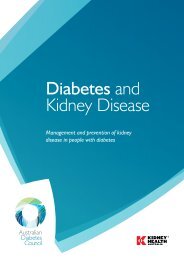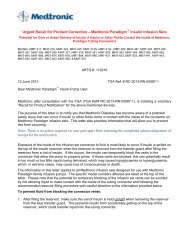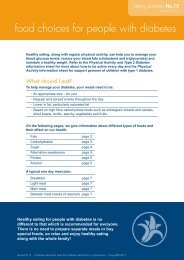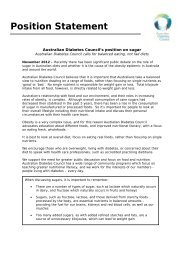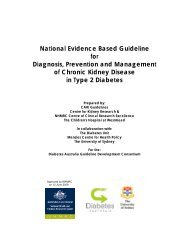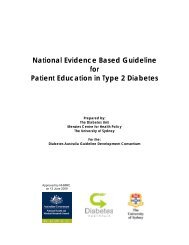Part 6: Detection and Prevention of Foot Problems in Type 2 Diabetes
Part 6: Detection and Prevention of Foot Problems in Type 2 Diabetes
Part 6: Detection and Prevention of Foot Problems in Type 2 Diabetes
Create successful ePaper yourself
Turn your PDF publications into a flip-book with our unique Google optimized e-Paper software.
Evidence Table: Section 5<strong>Detection</strong> <strong>of</strong> Loss <strong>of</strong> Protective <strong>Foot</strong> SensationAuthorLevel <strong>of</strong> EvidenceLevel Study <strong>Type</strong>EvidenceQualityRat<strong>in</strong>gMagnitudeRat<strong>in</strong>gRelevanceRat<strong>in</strong>gArmstrong DG (1998)(Adults – US)III-2 Case-control Medium High + HighBoyko EJ (1999)(Adults – US)III-2 Cohort High High + HighKlenerman L (1996)(Adults – UK)III-2 Cross-sectional High High + HighMayfield JA (2000)III-2Systematic review <strong>of</strong>Cohort studiesMedium High + HighMcGill M (1999)(Adults – Australia)III-2 Cross-sectional Medium High + HighMcNeely MJ (1995)(Adults – US)III-2 Case-control High High + HighPham H (2000)(Adults – US)III-2 Cohort High High + HighRith-Najarian S (1992)(Adults – Red LakeIII-2 Cohort High High + LowChippewa Indians)For magnitude rat<strong>in</strong>g:+Semmes-We<strong>in</strong>ste<strong>in</strong> mon<strong>of</strong>ilament predicts foot ulceration. High = cl<strong>in</strong>ically important & statistically significant; Medium =small cl<strong>in</strong>ical importance & statistically significant; Low = no statistically significant effect.Criteria for Quality <strong>and</strong> Relevance rat<strong>in</strong>gs are detailed <strong>in</strong> Appendix 9.46




